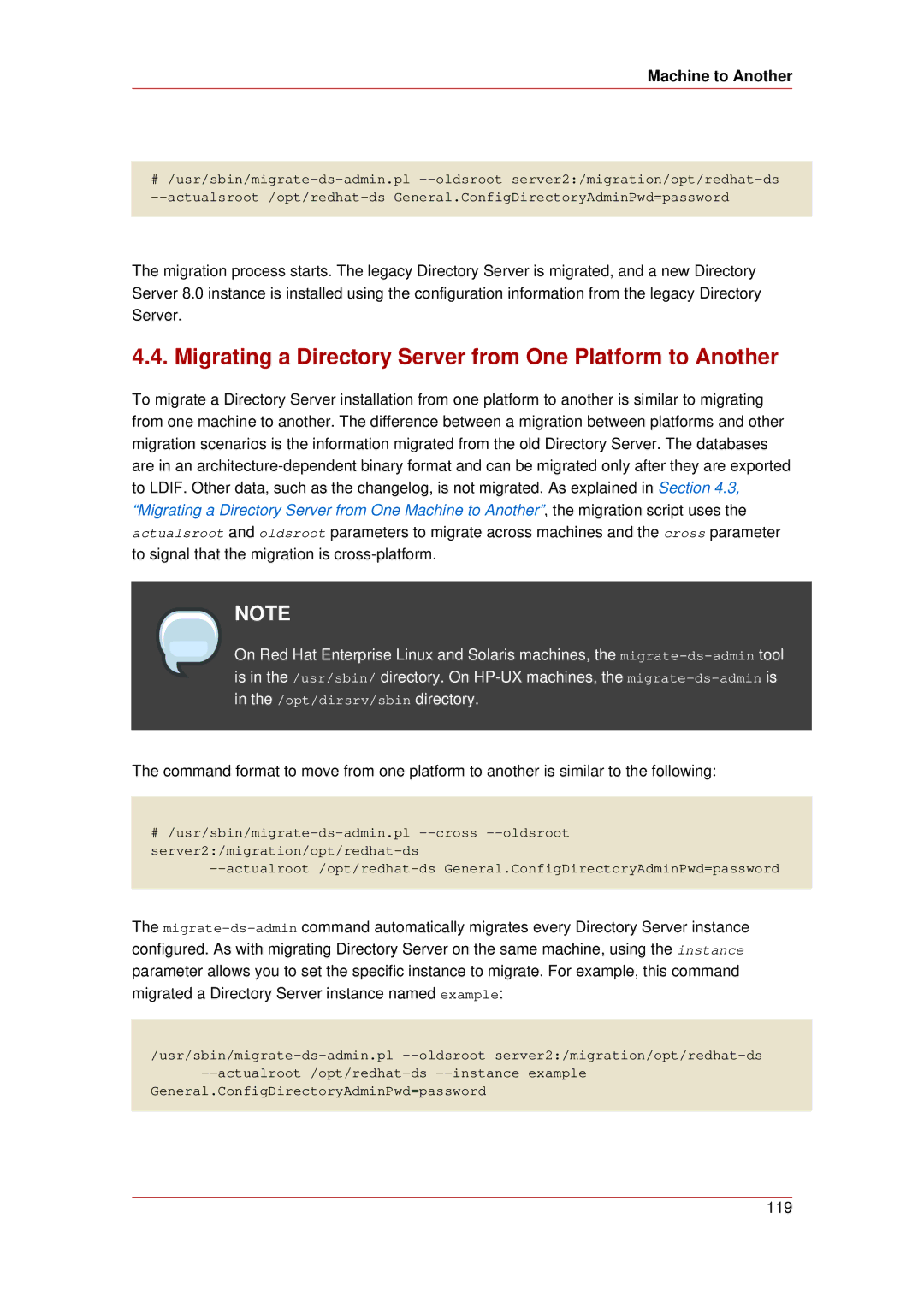Machine to Another
#/usr/sbin/migrate-ds-admin.pl --oldsroot server2:/migration/opt/redhat-ds --actualsroot /opt/redhat-ds General.ConfigDirectoryAdminPwd=password
The migration process starts. The legacy Directory Server is migrated, and a new Directory Server 8.0 instance is installed using the configuration information from the legacy Directory Server.
4.4. Migrating a Directory Server from One Platform to Another
To migrate a Directory Server installation from one platform to another is similar to migrating from one machine to another. The difference between a migration between platforms and other migration scenarios is the information migrated from the old Directory Server. The databases are in an architecture-dependent binary format and can be migrated only after they are exported to LDIF. Other data, such as the changelog, is not migrated. As explained in Section 4.3, “Migrating a Directory Server from One Machine to Another”, the migration script uses the actualsroot and oldsroot parameters to migrate across machines and the cross parameter to signal that the migration is cross-platform.
NOTE
On Red Hat Enterprise Linux and Solaris machines, the migrate-ds-admintool is in the /usr/sbin/ directory. On HP-UX machines, the migrate-ds-adminis in the /opt/dirsrv/sbin directory.
The command format to move from one platform to another is similar to the following:
#/usr/sbin/migrate-ds-admin.pl --cross --oldsroot server2:/migration/opt/redhat-ds
--actualroot /opt/redhat-ds General.ConfigDirectoryAdminPwd=password
The migrate-ds-admincommand automatically migrates every Directory Server instance configured. As with migrating Directory Server on the same machine, using the instance parameter allows you to set the specific instance to migrate. For example, this command migrated a Directory Server instance named example:
/usr/sbin/migrate-ds-admin.pl --oldsroot server2:/migration/opt/redhat-ds --actualroot /opt/redhat-ds --instance example
General.ConfigDirectoryAdminPwd=password

